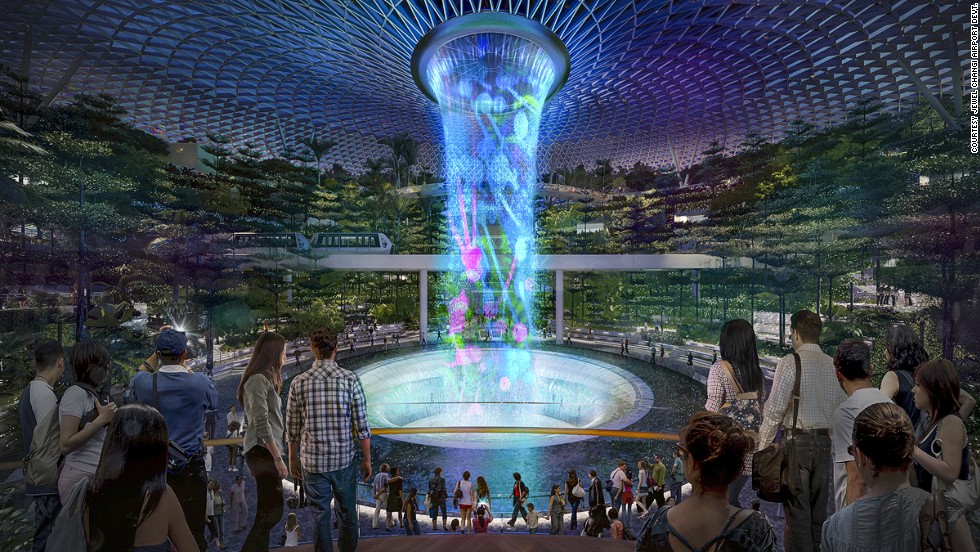(CNN) Think airports have been giving you the silent treatment recently?
You aren't being paranoid.
Increasing numbers of airports, especially in Europe, are taking on a "silent airport" philosophy.
This doesn't mean they'll be entirely noise-free.
Nor will Marcel Marceau-style mimes roam the terminals offering directions and gate information to wayward passengers via hand gestures and sad faces.
Instead, the idea is to reduce noise pollution, such as airport-wide announcements, without sacrificing timely and helpful updates of information.
International airports were once characterized by their cacophony of sounds, competing gate announcements and indistinguishable intercom messages, along with the Babel of languages being spoken within their confines.
This is all changing.
While the silent airport concept is not entirely new, advances in technology are allowing airports to more easily adopt the practice.
Angela Gittens, director general of Airports Council International (ACI), says there's a growing desire among airports and the airlines they serve to "create a calm, relaxed ambiance" without being disrupted by announcements.
"Passengers can wind down while they wait for their flight to board in the common airside lounges, commercial, and food and beverage areas," she says.
In June, Helsinki Airport in Finland -- a country where the tourism slogan is, aptly, "Silence, Please" -- became the most recent airport to adopt the silent concept.
As part of its commitment to quieting things down, announcements for flights are made only in boarding gate areas.
Lost track of time in the duty-free shop?
Too bad.
Nobody's going to call you to your flight, as announcements in all terminals will be made only in exceptional emergency circumstances.
Heikki Koski, vice president of Helsinki Airport at Finavia Corporation, says that improved flight information display systems and interactive kiosks, together with advances in mobile technology, including the ability to develop comprehensive apps, are changing the way airports communicate with passengers.
Munich, Germany-based InfoGate Information Systems is one company developing such technology.
Its multimedia, multi-function systems are designed to provide efficient information services and indoor navigation.
For example, at Munich Airport, InfoGate kiosks allow for face-to-face, albeit video-based, conversation with a live customer service representative in the traveler's language of choice. Additionally, documents can be scanned, printed and exchanged between the two parties.
Interactive signs, on the other hand, give directions at the touch of a finger. Passengers can tap a "you are here" display to get directions and estimated walking times to their destinations.
The highly-anticipated new airport in Jeddah, Saudi Arabia will open with the way-guiding InfoGate Interactive system in place, according to Manfred Zotl, the company's managing director.
Thanks to Bluetooth technology, passengers can also get information as they are going from Point A to Point B.
"Bluetooth Low Energy and beacon technology can improve way-finding, and location-based messaging to passengers... keeping passengers informed depending on their (specific) location and the time they are supposed to be at the gate," says ACI's Gittens.
Of course, an airport will never be as silent as a monastery.
There will continue to be a need for airport-wide emergency announcements, along with boarding calls.
But at silent airports, the latter can be confined to specific gates, as has been adopted in Helsinki.
Another issue In this day and age of wide-ranging international travel is language.
It may well be that the language of the airport is not that of the traveler. Oftentimes, the default second language is English.
However, according to the University of Utrecht in The Netherlands, of the world population of 7.2 billion people, only 1 billion speak English, and only 400 million are native speakers.
And even if travelers know the language being spoken, local accents and fuzzy intercom systems may make the announcements unintelligible.
In an attempt to ensure that announcements are easier to understand, Amsterdam-based AviaVox has developed phoneme technology.
AviaVox managing director Johan Godin describes the technology as "digital speech fragments that can build words and these words then can build sentences."
"These sentences are being generated by system software in which strict rules on grammar and pronunciation are programmed in order to make a computer speak as if it was a native human being," he says.
Moreover, if an Air China flight, say, is being moved to a different gate, the system can incorporate Chinese in its messaging.
AviaVox is already installed in several European airports, including, Bristol, Cardiff, Eindhoven, Lodz, Poznan and Genoa.
Finally, in more and more cases, there's an app for that airport.
Most apps for international airports provide flight status updates, interactive terminal maps, weather information, and security guides, along with other airport-specific features.
So, as long as passengers have a (charged) device, all the information they need should be in the palm of their hands.
Journalist Laura Powell was one of CNN's original travel reporters. Her focus is on international travel news and trends.




























